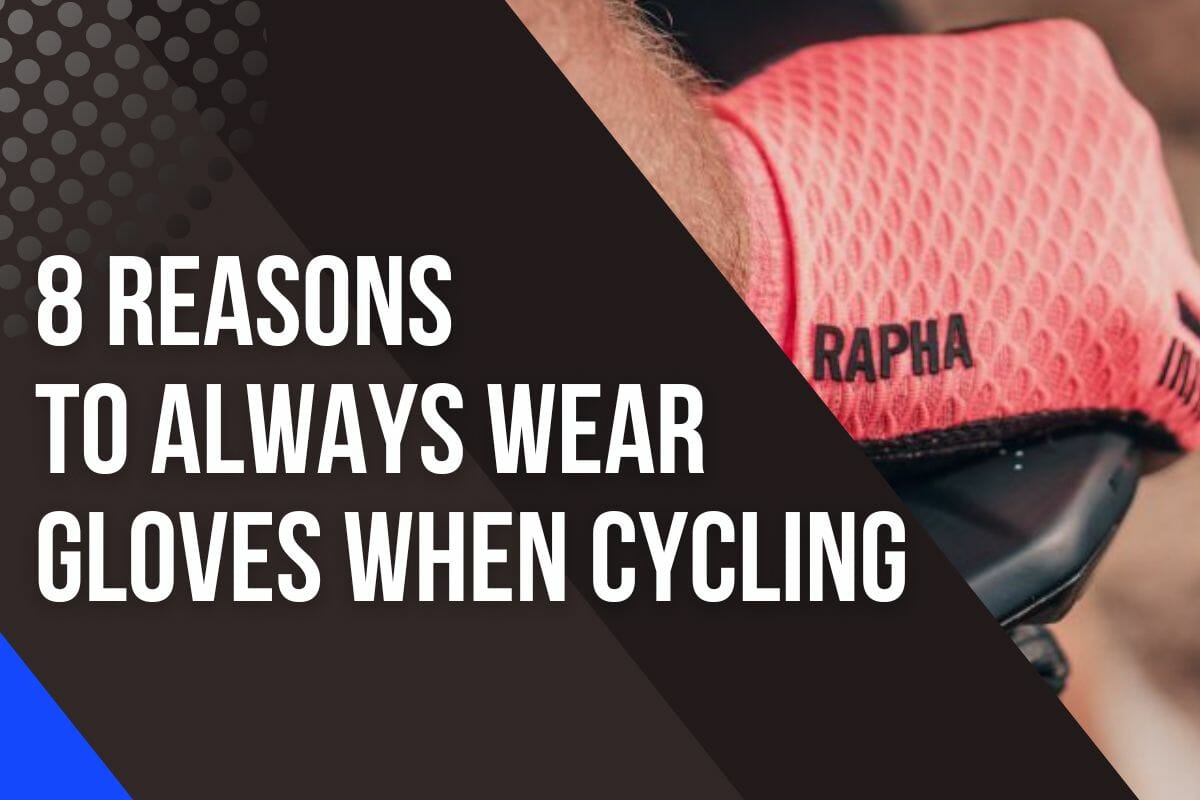What Is A Bidon In Cycling?

From the Tour de France to your next bike ride, water bottles are an essential part of cycling.
But what exactly is a bidon? And why Tour de France fans were battling to collect those?
In this article, we’ll explore the humble and rich history of bidons.
Its evolution has made it indispensable to cyclists and highly sought-after by fans.
What Is The Definition Of Bidon?
The term ‘bidon’ is used in the cycling world to describe a container or vessel that is used to hold liquid, typically water or sports drinks.
The word originates from the old Norse word ‘bida’, which means container or vessel.
It has ties to the French language in terms of phraseology; bidon is still sometimes used colloquially in France as slang for belly or ‘a load of bull’.

Bidons come in many shapes and sizes, with cyclists usually opting for 600ml aluminum bottles sealed with an airtight cap and lid.
They may be hand-held, have mounts attached so they can be fastened to a bike frame, or even have straws affixed so riders can access their drinks without having to stop pedaling.
A Brief History Of Water Bottles In Pro Cycling
Cycling has long been a sport of endurance and strategy. As such, proper hydration is essential for any successful Tour de France rider.
The bidon, or water bottle, has become an iconic symbol of the sport and its importance should not be underestimated.
The first bidons were made from aluminum with cork stoppers and mounted on handlebars in the 1950s.
As cyclists pushed their limits further, bigger bottles became necessary to carry more water for longer rides.

This led to plastic becoming the material of choice for water bottles as it was lightweight yet strong enough to withstand long-distance riding conditions.
Since then, professional cycling teams have gone to great lengths to ensure that their riders are properly hydrated during competition.
Team Sky’s nutritionists developed a custom Beta Fuel product specifically tailored to Chris Froome’s 2018 Giro d’Italia attack on the Colle delle Finestre while Cannondale released a 100-per cent compostable version for EF Education-EasyPost riders at the 2022 Giro.
Bidons also have had less savory moments in history, Eugenio Alafaci apologizing for throwing one at another rider during 2017’s Giro D’Italia, and many incidents where grown men fought over souvenir versions.
Today, bidons are still an important tool used by pro cyclists around the world as they face physically and mentally grueling challenges every day.
From domestics gathering bottles, from race cars to soigneurs desperately waving them at roadside riders, bidons remain one of the most essential accessories in professional cycling today!
Strict Rules On Bidon Usage In The Tour De France
The Tour de France is one of the most iconic cycling events in the world. As such, cyclists must adhere to a strict set of rules when using bidons during the race.
The Sticky Bidon controversy emerged in the 2011 Tour de France when soigneurs were seen passing bidons to riders from the moving support car.
At first glance, this seems innocuous enough – after all, cyclists need water during long races.
However, closer examination revealed that some riders were taking advantage of the situation by holding onto the bottle while it was still in the soigneur’s hand, essentially giving them a little tow.

This prompted an immediate review by the UCI of its rules regarding passengers and riding aids, leading to a clarification of passing bidons from vehicles during races.
The new rules focus on ensuring fair play – riders must not accept more than one bottle at a time and any bidon which is passed must be clearly visible to others while being accepted.
Also, riders may not discard empty bottles onto the road or throw them into fans or crowds. The official cleanup crew will collect discarded bottles at specific points during the race and dispose of them properly.
The Aero Bidon
The Aero Bidon is a revolutionary bottle designed specifically for cyclists.
It takes the ancient art of bidon-making to a whole new level, offering an aerodynamic shape that reduces drag and increases speed.
The bottle also has an ergonomically designed cap for ease of use, allowing riders to quickly and easily take sips during their ride.
Their curved surface reduces drag while riding, allowing cyclists to move faster without wasting energy on wind resistance.

However, aero bidons are not UCI-legal for road races.
Since 2013, the UCI (Union Cycliste Internationale) has put in place rules that strictly forbid any device being added or blended into the structure of bicycles that decreases resistance to air penetration or artificially accelerates propulsion.
This means that while certain streamlined bottle designs may be more aerodynamically effective, they are not allowed to be used in official races by Tour de France riders due to their potential for an unfair advantage.
Bidon Pollution
The Tour de France is a famous cycling event, but it also has a litter problem. Riders are not allowed to throw things on the road, but they do it every year. This has become a big issue over time.
Many fans want to collect items like water bottles thrown by the riders, but they often can’t find them. The riders throw these things away without caring where they land.
There is also a lot of trash from food wrappers and energy gel tubes along the race route. The problem gets even worse because of the extra vehicles in the pre-race caravan. These cars create more rubbish too.
This littering is bad for the environment and takes away from the beautiful scenery of the race. It is important to address this issue in order to maintain the prestige of the event.
Back in 2018, the UCI put its foot down on a rule that would disqualify riders caught tossing bottles where they shouldn’t.
Oddly enough, this wasn’t a fresh regulation but one they finally chose to uphold.
Interestingly, the enforcement of this rule sparked an outcry from certain teams. They contended that riders playfully fling their bidons to the fans as a token of their affection.
What Size Water Bottle Should I Get For Cycling?
When deciding what size water bottle to use for cycling, there are a variety of factors that should be considered.
First and foremost, you want to make sure the capacity is sufficient for your ride and the weather conditions. On a long ride in warm weather conditions, two large water bottles may not be enough.
Likewise, if wandering on a gravel bike with three water bottle cages fitted, three 26oz (750ml) bottles per cage can add up to an additional 2.2kg grams (4.8lbs).
Thus, weight becomes a significant factor when choosing what size bottles you should buy for cycling.

However, you do need to be sure that the amount of fluid carried isn’t excessive either as this will make your rig too heavy.
While dehydration could lead to dangerous implications such as overheating and exhaustion, excess water weight could also leave you tired faster due to carrying more than necessary while on your rides.
Ultimately, choosing the right size water bottle should depend on how long you plan on being out and how hot it is or is expected to be during your ride as well as factoring in how much weight you want to add onto your cycle by considering the available cage locations and sizes on hand throughout your journey.
Carrying A Water Bottle While Cycling
The most common way to carry water is with a traditional bike bottle and cage.
Most bikes will have fixings to mount the best bottle cages, usually on the down tube which is tucked out of the way and easily accessible to the rider.

If your bike does not have these fixings, you can purchase a cage that mounts onto other areas of the bike such as the seat tube or handlebars.
Moreover, there are many professional cycling teams that use team leaders who carry thousands of bottles for their riders during races and official cleanup crews who collect discarded bottles after events.
Are Insulated Cycling Bottles Worth It?
The short answer is: yes!
Insulated cycling bottles may cost slightly more than their non-insulated counterparts, but they are worth the extra investment.
An insulated water bottle contains an internal lining that helps to keep your water at the same temperature for longer, making it ideal for those long rides on warmer days.
Rather than taking a mouthful of warm water when you’re craving something cool, you can enjoy a refreshing sip as though it had just come straight from the fridge!

That said, if you tend to take shorter rides in comfortably temperate weather then an insulated water bottle may be overkill.
When deciding whether or not an insulated cycling bottle is worth investing in, think about how long and how often your bike rides are, as well as the local climate of your area.
This should give you a good indication of whether an insulated bottle will be beneficial for keeping your drinks cooler for longer periods.
How Often Do You Need To Replace Your Bottle?
The lifespan expectancy of any given cycling bottle will depend on its material, construction, maintenance habits, and type of use.
While plastic bottles can last forever from a practical standpoint, this has implications for the environment.
Companies are starting to use more sustainable materials and designs in their products in order to reduce waste.
For example, Cannondale recently unveiled a 100-per cent compostable water bottle for use by the EF Education-EasyPost team at the 2022 Giro d’Italia.

As for other materials such as stainless steel or aluminum, they are more durable but may still require replacement after extensive use or wear and tear over time.
This answer may differ slightly for professional cyclists who need to dispose of large amounts of bottles every year, as opposed to casual cyclists who may want to use their purchases more cost-effectively.
Luckily, with simple maintenance and care regimens, even everyday cyclists can get years of use out of the same water bottle before needing a replacement.
Over time though, water bottles will become harder to open and close, scratched surfaces make it harder to get out of cages or racks, and faded designs can indicate it’s time for a new one if looks matter most.
If you find yourself frequently needing to clean out residue buildup within the container then this could also be an indication that it’s time for a replacement.
How Do You Clean Your Water Bottle?
Keeping your water bottle clean is key to enjoying fresh, cold drinks on the go.
The first step is to check the manufacturer’s recommendations for your particular bottle and see what it can tolerate.
Some are perfectly safe to use in a dishwasher with lots of heat and detergent, while others perform best when hand-washed only with mild soaps and warm water.
If you’re using a standard plastic bottle, then it’s best to avoid using any abrasive cleaners or soaking agents as this can cause damage over time.
For metal bottles, a more thorough scrubbing may be required in order to remove build-up and odors.
If you can’t remember what yours is rated for, a simple web search will quickly tell you if you’re unsure.
Make sure to rinse thoroughly afterward so no soap residue remains in the bottle.
Once the inside has been cleaned, move onto the outside by using a gentle brush or cloth with some mild detergent.
Scrub gently around the edges and grooves until they’re completely clean.
It’s essential that you keep your cycling bottles properly maintained if you want them to last as long as possible – regular cleaning is key!





